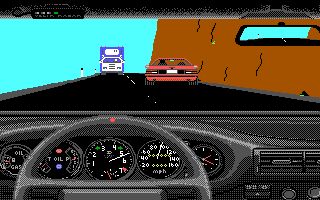The year was 1980, and IBM asked Digital Research for a version of CP/M (the Z80 OS) that works on x86 processors. But Microsoft was in a hype. Everyone wanted MS-DOS. Several other DOS flavors were released, some took flight, others we can't even find reference nowadays. But DR was famous because of the Z80s and the CP/M OS, which was very popular among gamers and arcade developers at the time. Let's tell the story:
DR-DOS is a popular PC operating system, created and developed up to version 6.0 by Digital Research. After the demise of Digital Research, it was acquired by Novell who released version 7.0 as Novell DOS 7. Despite being a commercial success, Novell lost their interest in the further development of DR-DOS and, in 1996 sold it to Caldera, who changed the name to Caldera OpenDOS 7.01 and released the source code of the kernel under an Open Source license. Subsequent versions were named DR-DOS again, but unfortunately, the development model was changed back to Closed Source. Caldera Thinclients, a subsidiary of Caldera which later renamed itself to Lineo, continued the development of DR-DOS as an OS for embedded systems before they abandoned its development in favor of Linux. The current owners of DR-DOS, Devicelogics, acquired it in November 2002 and promised to produce an 8.0 version of DR-DOS for the embedded systems market, which was released in March 2004.
In July 2002, when the commercial development of DR-DOS was stagnating and the last official version had been released three years ago, Udo Kuhnt, an independent developer who worked on the open source code for the DR-DOS Kernel 7.01 decided to continue the development of DR-DOS as an Open Source operating system. Since the source code of later versions was not freely available, he used the source code of DR-DOS 7.01 alias OpenDOS as a base for his work and started to write his own set of patches for it. Thus, The DR-DOS/OpenDOS Enhancement Project was born!
As the name states, this project aims to enhance the capabilities of DR-DOS/OpenDOS 7.0x and to add support for new standards. In the first two years, the project reached many of its short-term design goals, including native support for large disks (LBA) and the FAT32 file system, and it became a bigger success than no one had ever hoped. Like other, similar projects, it strives to achieve compatibility with most existing software written for DOS.
IBM Personal Computer Disk-based Operating System, or IBM PC-DOS, is an operating system sold by IBM in their machines from the early 1980s into the early 2000s. It was developed by Microsoft and IBM, Until 1993, it was almost identical to MS-DOS, the Microsoft DOS operating system, when IBM released PC-DOS 6.1, with new features while Microsoft was aiming at the Windows project.
MS-DOS is an operating system for x86-based personal computers developed by Microsoft and IBM.
MS-DOS, rebranding as IBM PC DOS, and a few operating systems attempting to be compatible with MS-DOS, are sometimes referred to as "DOS". MS-DOS was the main operating system for IBM PC compatibles during the 1980s, but it was gradually superseded by operating systems offering a graphical user interface (GUI), in various generations of the graphical Microsoft Windows operating system.
| From Wikipedia, the free encyclopedia: | ||||
| Test Drive is a racing video game developed by Distinctive Software and published by Accolade, released in 1987 for the Amiga, Atari ST, Commodore 64, and DOS, in 1988 for the Apple II, and later ported for the PC-98 in 1989. It is the first game in the Test Drive series.
The player chooses one of five supercars (Lamborghini Countach, Lotus Esprit Turbo, Chevrolet Corvette C4, Porsche 911 Turbo (930), or Ferrari Testarossa) to drive on a winding cliffside two-lane road while avoiding traffic and outrunning police speed traps. The course's five stages are separated by gas station pit stops.
In 1987, Accolade published Test Drive as a computer game worldwide, and Electronic Arts imported it to the United Kingdom. The quality of the Amiga, Atari ST, Commodore 64, and DOS ports differ from each other. The Amiga version's detailed visuals and audio realistically depicted the game's racing theme, while its Atari ST counterpart used simplified graphics and sound effects. The Commodore 64 and DOS ports were of similar quality to the Amiga version. The gameplay was kept intact for all platforms. Test Drive was a commercial hit. In late 1989, Video Games & Computer Entertainment reported that the game's sales had surpassed 400,000 units and were well on their way to the half-million mark. It received generally positive reviews from video game critics. Computer Gaming World stated in 1987 that Test Drive 'offers outstanding graphics and the potential to 'hook' every Pole Position fan'. David M. Wilson reviewed the game for the magazine in 1988, stating that 'there may be more competitive racing games on the market, but this game combines the enjoyment of driving five of the most exotic sportscars in the world with outrunning 'Smokies' on mountain highways. What more could a race car junkie (or arcade fan) ask for?!' Compute! praised the excellent graphics and sound, but noted that the game only had one course. The game was reviewed in 1988 in Dragon #132 by Hartley, Patricia, and Kirk Lesser in 'The Role of Computers' column. The reviewers gave the game 41⁄2 out of 5 stars. Test Drive spawned several sequels and spin-offs. Distinctive Software developed its 1989 sequel, Test Drive II: The Duel.More details about this game can be found on Wikipedia.org. |
